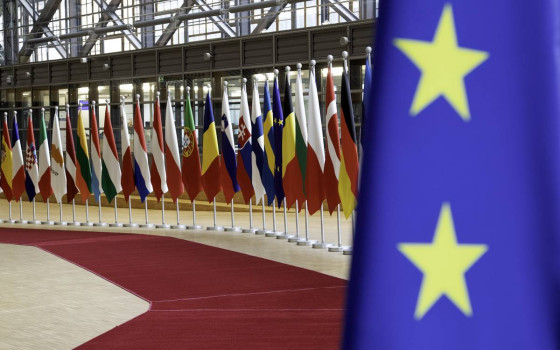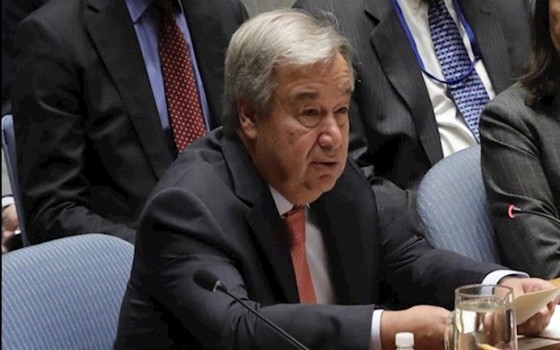
The European Union Presidency: Concrete commitments on biodiversity at the Conference of the Parties to the Convention on the Conservation of Wild and Migratory Species of Wild Animals

- Europe and Arabs
- Monday , 19 February 2024 11:31 AM GMT
Brussels: Europe and the Arabs
A statement issued by the current rotating Belgian presidency of the European Union stated that Samarkand in Uzbekistan, from February 12 to 17, hosted the fourteenth meeting of the Conference of the Parties to the Convention on the Conservation of Migratory Species of Wild Animals (CMS COP14). By coordinating negotiations on behalf of the European Union and working closely with the Commission and other Member States, the Belgian Presidency of the Union contributed to the adoption of important measures. The agreement agreed to increase international cooperation to improve the environmental connectivity between ecosystems and habitats. Concrete decisions have also been made in favor of 21 species that will benefit from greater protection.
Support the implementation of the global biodiversity framework
The Fourteenth Conference of the Parties to the Convention on Migratory Species (CMS COP14) is one of the most important global meetings on biodiversity since the adoption of the Global Biodiversity Framework. This framework was reached in 2022 at the fifteenth meeting of the Conference of the Parties to the Convention on Biological Diversity (CBD COP15) in Montreal, and includes a number of global goals and targets to be achieved by 2030 and beyond to ensure protection and sustainable use. for biodiversity. In Samarkand, the presidency's goal was clear: to adopt an ambitious and constructive role in the negotiations to ensure the effective implementation of the Convention, thus respecting Montreal's pledge to halt biodiversity loss and restore natural ecosystems.
The alarming numbers call for urgent action
The first report on the status of migratory species in the world was presented in Samarkand. It paints a worrying picture. Worldwide, migratory animal populations are declining, while their habitats are becoming rarer and more degraded. In fact, 1/5 of the migratory species listed by CMS are threatened with extinction. 309 species not yet listed in the Convention, mostly birds and fish, are also at risk.
The report also identifies a series of priority measures to address pressures threatening migratory species, such as climate change, overexploitation (poaching and hunting) and pollution (by chemicals, pesticides and plastics, as well as light and noise). The report emphasizes that scientific knowledge about the conservation status and threats facing migratory species is essential for effective decision-making.
Nature knows no boundaries
The new Strategic Plan of the Convention on Migratory Species (2024-2032) has been adopted. It includes 6 goals covering the conservation of migratory species, the protection and restoration of their habitats and distribution areas, and the elimination or reduction of threats. Implementing its goals and targets should enable migratory species to thrive and live in restored and connected habitats by 2032;
A global partnership on environmental communication was launched, recognizing the need for cross-border cooperation on knowledge and data, political support and implementation through national biodiversity strategies and action plans. In the context of global changes such as climate change and infrastructure development, connectivity is crucial to sustaining the movements of migratory species;
New guidelines have been approved to mitigate light pollution, with particular emphasis on brightly lit areas that overlap with critical habitats or migration corridors. This is a real step forward as light pollution increases around the world. Artificial light disturbs wildlife behavior and hinders the ability of migratory species to make long-distance migrations;
Overexploitation due to illegal and unsustainable takings is one of the biggest threats to wildlife. Following a zero-tolerance approach to the illegal killing, taking and trafficking of migratory species, the COP14 resolution aims to strengthen legislative oversight in relation to takings;
Direct or indirect poisoning is one of the major threats to migratory birds worldwide. Accidental poisoning is mainly caused by poisoned carcasses. All countries are invited to review their legislation on lead ammunition and lead weights used in fishing, as well as on veterinary medicines;
10 species have been added to Appendix I, ensuring their strict protection. A further 11 species are listed in Appendix II, encouraging range countries to conclude global or regional agreements for their conservation and management. The EU has secured strict protection for Baltic harbor porpoises (Appendix I), of which fewer than 250 individuals remain in EU waters. COP14 agreed to provide better protection for the common lynx (Appendix II) and Balkan lynx (Appendix I), some of which have recently been spotted in Greece. CMS will also ensure the conservation of the bull shark (Appendix I), a species that faces an extremely high risk of extinction due to intentional fishing and bycatch.












No Comments Found